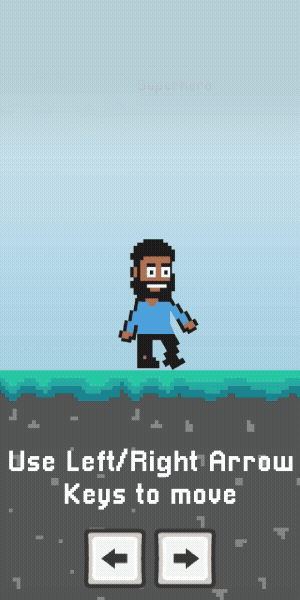As Sudan’s civil conflict passes the two-year mark, it has displaced an estimated 12.7 million people, and around 30 million are in desperate need of humanitarian aid.
Though it hasn’t generated as many headlines in the West as conflicts in Gaza or Ukraine, it is the world’s worst active humanitarian crisis, according to the UN.
Amid the war, a nationwide mobile connectivity blackout early last year plunged millions into a digital silence, cutting them off from critical communication channels and mobile financial services.
Nearly 30 million cellular mobile connections were active just before the blackout, equivalent to nearly 60% of the population.
The outage, which lasted 40 days, paralysed services provided by three of the country’s major mobile network operators (MNOs), including Zain Sudan.
At the time, Zain was forced to post on Facebook that it was “working under very difficult, harsh, and dangerous circumstances.” It added that the “current network outage is due to circumstances beyond its will.”
In Sudan, many people use mobile wallets. These allow them to store funds, pay bills, and transfer money without a traditional bank account. With connectivity offline, the disruption caused severe economic repercussions and destabilised an already fragile financial system.
On top of this, the breakdown in connectivity severely impacted communication to emergency services and humanitarian support civilians desperately needed, the opportunity for them to seek safe zones from fighting, and access life-saving necessities.
“Without communication, humanitarian operations and emergency services are likely to grind to a complete halt, putting millions of lives at risk,” Sarah Jackson, deputy regional director of human rights organisation Amnesty International East and Southern Africa, said at the time.
One humanitarian worker told Amnesty: “E-wallets require internet connectivity to complete transactions. Lack of internet connectivity freezes E-wallet transactions, and no funds mean no delivery of most of the [emergency] work, including delivery of food and other necessities.”
Getting back online during a crisis
Zain – part of the Kuawaiti-based Zain Group – initially faced a delayed recovery timeline in order to connect civilians again, with all of its data centres without power.
Its incumbent technology vendor estimated that restoring full service would take six to nine months: Time required to ship new hardware (likely from outside the continent), install it in a data centre, deploy engineers and install the necessary software.
This only highlighted the limitations and risks of Zain’s on-premise infrastructure, with the risk of possible future blackouts and the high cost of disaster recovery.
So, it partnered with Totogi, a provider of cloud-based telecoms software, to migrate its core services to the public cloud.
It needed a solution that would fix the issue in a very “tough and short timeline,” says Abdalla Hamid, director of IT at Zain Sudan, on the podcast of CEO of Totogi, Danielle Rios.
Totogi’s Charging-as-a-Service solution is built on public cloud Amazon Web Services.
“We did that because it’s a super modern technology, [AWS] are managing the hardware and the servers, and it takes the pressure off of Zain to build their hardware on-prem,” says Rios.
“We just need to connect the network, which takes days,” she added, and with Totogi, Zain Sudan was back online 18 days after signing the contract.
Cloud-native agility
The migration enabled Zain to onboard over 20 million subscribers to the new architecture, which it says helped modernise its Business Support Systems (BSS) and future-proof operations against further disruption.
To reach the quick timeline necessary, Totogi’s implementation required teams from Totogi and Zain across multiple time zones, reaching from Sudan to New Zealand, to work on the migration.
“Partnering with Totogi allowed us to not only navigate this crisis but also emerge stronger, keeping our customers connected and operations uninterrupted,” says Emad Elsheikh, CTO of Zain Sudan.
“Totogi’s technology, combined with an unwavering commitment from their team, has been pivotal in connecting people across Sudan when they needed it the most,” he adds before highlighting that the way the solution managed to handle large-scale subscriber bases under demanding conditions, “particularly in times of crisis when traditional on-prem systems” were likely to fail.
They explain that the speedy recovery not only helped civilians but also brought financial benefits. Zain, which had been losing an estimated $12 million per week during the outage, recovered roughly half of those losses upon resumption of service.
Plus, Totogi’s solution enabled the company to generate nearly $100 million in revenue, restoring its financial footing in a critical period.
Beyond revenue recovery, the shift to a public cloud architecture lowered operational costs. It claims that hardware and infrastructure requirements were cut, reducing total cost of ownership by approximately 76%.
Environmental impact was another consideration. AWS’s use of 100% renewable energy contributed to a 96% reduction in carbon emissions associated with the new system.
Reconnecting lives
For millions of Sudanese, the technology shift brought more than operational or financial advantages, it restored essential connections, businesses and emergency services.
What began as a crisis-response project ultimately enabled Zain to onboard new users in a faster time, extending services not only to existing subscribers but also to those previously outside its network.
“[But] it’s so much more than a fast technology implementation,” says Rios, “it’s that we’re helping the people in Sudan to communicate with their loved ones and to get money for food.”
Local businesses were able to operate again, and emergency services could reach those in need. Regulatory compliance was swiftly reinstated, ensuring uninterrupted service in the future.

